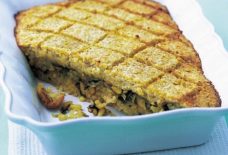A New Face for Arab Democracy--Alaa Salah Speaks Out
By: Hamza Khan/Arab America Contributing Writer
Alaa Salah is trembling as she struggles to rise onto the front hood of an SUV. Khartoum’s police and the Sudanese Army has been violently assaulting protesters for months, using live rounds from automatic weapons. Standing atop a car, visibly above the headline makes her an easy target for a regime that once hosted Al Qaeda on its soil and is hell-bent on remaining in power all costs. A crowd gathers, whipping out smartphones to record her passionate speech calling for democracy. Salah is unafraid. Her mind fills with the thoughts of those who fought and died before her using peaceful means in the name of the Sudanese people–Arab and non-Arab alike. A Muslim, she knows her time on this earth is finite–but her zeal for freedom is for posterity.
The image of Salah standing upon a car, striking a pose of iconic defiance to the Bashir regime has become the defining image of the Arab Democracy overnight. Brought to international attention by Sudanese American activist and thought leader Hind Makki of Chicago, Illinois, the photo has been retweeted thousands of times.
Makki offered a detailed analysis of what Salah’s composure and the symbolism behind her outward appearance mean to the average Sudani & Sudanniyah. Beginning with her outer garment, the tobe is made from the simple white cotton favored by both the urban and rural women of Sudan–with cotton being one of the country’s major exports. Often world-renown Egyptian cotton is compared to Sudanese, with the latter being hailed as far more versatile and soft than its more famous northern cousin. Salah further adorned herself with Moon earrings, which have come to symbolize feminine Arab empowerment, given how previously male-dominated traditional Arabic literature was often describing women of great beauty as resembling earth’s lunar satellite. The entire outfit, Makki explains, hearkens back to the leading role women played in the 1950s and 1960s in protests against former Sudanese dictatorships.
The photograph, taken by Sudanese musical & visual artist Lana Haroun, is probably one of the most striking images of the new face of Arab Resistance & Islamic Democracy. While an apparent regression in democratic norms is being observed in Europe, Israel & India, the Muslim world has suddenly seen a resurgence of democratic zeal, hearkening back to the Republican era of the 1920s–nearly 100 years ago to the day.
In Pakistan, reformist and global superstar Prime Minister Imran Khan recently announced the end of Pakistani cooperation with jihadist militias favored by previous military dictatorships in the past. In Turkey, despite immense pressure by the ruling AKP, the national electoral commission ensured a fair process that has seen dramatic setbacks as the opposition gained control of municipal governments in all three major cities: Ankara, Istanbul, and Izmir for the first time in a quarter century.
Tunisia, hailed by many as the “L’honeur des Arabes et Islam,” will go to the polls for the second time since the collapse of its authoritarian regime later this year. Coupled with democratic elections in Indonesia, the world’s largest Muslim country by population, and Malaysia’s toppling of a Trumpian regime in elections last year, the democracy protests in long-suffering Sudan represents the rise of millennial power across the traditional Arab & Muslim worlds.
It is too early for us to tell if the democracy protests will succeed in Sudan. But the image of a mocha-hued Sudanese Arab woman is redefining both what the Arab Street looks like today, and also what Arab beauty standards are. Only a few weeks ago, Vogue Arabia published a heavily edited photograph of Somali American congresswomen Ilhan Omar, whose skin-tone was dramatically lightened, in a kowtow to Arab internalization of white beauty standards, courtesy of European colonization. Previously, several Arab regimes have refused to sign off on the appointment of darker skinned American ambassadors to their capitals, demanding “whites only” be appointed. As demonstrated simply by Vogue Arabia embracing Omar, and with the rise of voices like Makki, Haroun & Salah—the Arab world is evolving, and fast.
Salah’s image offers a new ray of hope that the Arab World & Arab Diaspora will embrace black is beautiful as a rallying cry for freedom, as well as the most accurate definition of Islam’s commitment to racial & social justice. It also offers a chance for women of Sudanese heritage in the West to emerging from the shadows as political activists and candidates for office as well, insha’Allah.
Take for instance education activist Marwa Ibrahim of Montgomery County, Maryland. Ibrahim, a Sudanese American, ran in a crowded field last year be on the county’s Board of Education, which has a 2.4 billion dollar annual budget. But, aside from being part of a wave of Muslims running across Maryland, Ibrahim was not embraced by the mostly Pakistani-controlled Muslim political elite of Maryland, which feared losing control of the Muslim political narrative if a black, Arab Muslim woman won political office in the state’s wealthiest legislative jurisdiction. Ibrahim remains undaunted, and when asked last year whether she might run again, responded calmly: “Insha’Allah.”
Insha’Allah, indeed.
Hamza Khan is a contributing writer to Arab America. He is also a Muslim American political activist based in Maryland. Follow him on Twitter at @HamzaSKhan (link: http://www.twitter.com/hamzaskhan)



